Page Content
ATA Library Boasts New Titles
Student engagement, purposeful play and dialing down stress among topics covered by new offerings
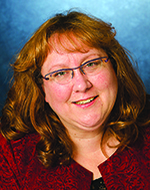 Welcome back to another school year! Your ATA library is bursting with new resources to give you great new ideas for your professional growth. We’ve highlighted a few of these resources below, but we have so much more. Visit our library catalogue at http://library.teachers.ab.ca to browse our collection or e-mail us at library@ata.ab.ca for research support. Every teacher, no matter where they work in the province, gets full access to our library resources and services by simply being an ATA member. Contact our friendly staff and connect to these amazing resources today.
Welcome back to another school year! Your ATA library is bursting with new resources to give you great new ideas for your professional growth. We’ve highlighted a few of these resources below, but we have so much more. Visit our library catalogue at http://library.teachers.ab.ca to browse our collection or e-mail us at library@ata.ab.ca for research support. Every teacher, no matter where they work in the province, gets full access to our library resources and services by simply being an ATA member. Contact our friendly staff and connect to these amazing resources today.
BOOKS
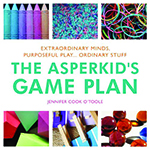 The Asperkid’s Game Plan: Extraordinary Minds, Purposeful Play ... Ordinary Stuff
The Asperkid’s Game Plan: Extraordinary Minds, Purposeful Play ... Ordinary Stuff
O’Toole, J C. 2014. London, UK: Jessica Kingsley Publishers (371.9 O87)
With the goal of addressing weaknesses of students with Autism Spectrum Disorder and reinforcing their strengths, author Jennifer Cook O’Toole explains how to introduce structured play to address issues like organization, socialization and fine motor skills.
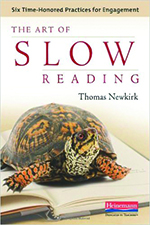 The Art of Slow Reading: Six Time-Honored Practices for Engagement.
The Art of Slow Reading: Six Time-Honored Practices for Engagement.
Newkirk, T. 2012. Portsmouth, NH: Heinemann
(372.47 N548)
In the United States, students are being increasingly pushed to read faster through the push to standardized testing. In this book, author Thomas Newkirk argues that literary engagement and learning generally is being sacrificed in the name of the mighty test. He makes a case for teaching students to read slowly so that they reflect on the text and engage on a deeper level with literary experience.
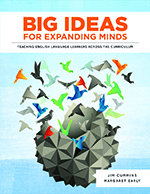 Big Ideas for Expanding Minds: Teaching English Language Learners across the Curriculum
Big Ideas for Expanding Minds: Teaching English Language Learners across the Curriculum
Cummins, J and M Early. 2015. Oakville, ON: Rubicon
(428.24 C971)
Students who are new to English are often at a disadvantage in the classroom when the teaching strategies are not coordinated at the school level across the curriculum. This book provides teachers with insights into the struggles of ELL students at all levels and suggests strategies that can be used across the curriculum to help these students succeed.
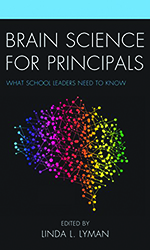 Brain Science for Principals: What School Leaders Need to Know
Brain Science for Principals: What School Leaders Need to Know
Lyman, L L. 2016. Lanham, MD: Rowman & Littlefield
(371.2 L986)
Taking a look at school leadership from an educational neuroscience point of view and taking neuroplasticity into account, this book explains how principals can enhance learning and social justice through an awareness of neuroscience.
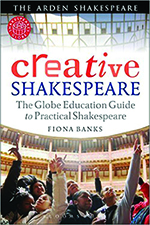 Creative Shakespeare: The Globe Education Guide to Practical Shakespeare
Creative Shakespeare: The Globe Education Guide to Practical Shakespeare
Banks, F. 2013. London, UK: Bloomsbury Arden Shakespeare
(822.33 B218)
Exciting may not be a word that many students use to describe reading a Shakespeare play. However, for people who work at Shakespeare’s Globe Theatre and engage in the texts every day, Shakespeare is funny, dramatic, terrifying and sweet. In this book, these practitioners bring together games and performance ideas that captivate students and bring new life to the texts.
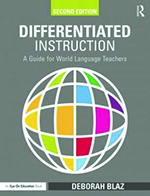 Differentiated Instruction: A Guide for World Language Teachers
Differentiated Instruction: A Guide for World Language Teachers
Blaz, D. 2016. 2nd edition. New York, NY: Routledge
(418.0071 B645)
Using neuroeducation teaching strategies, author Deborah Blaz explains how to create tiered lesson plans to help students of all ability levels thrive in the language classroom.
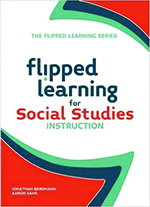 Flipped Learning for Social Studies Instruction
Flipped Learning for Social Studies Instruction
Bergmann, J and A Sams. 2015. Eugene, OR: International Society for Technology in Education
(300.71 B493)
Written by the two teachers who developed flipped learning, this book offers specific advice for using the flipped instruction model in the social studies classroom.
The Happy Teacher Habits: 11 Habits of the Happiest, Most Effective Teachers on Earth
Linsin, M. 2016. San Diego, CA: JME Publishing
(371.102 L759 2016)
Despite the rather sugary title of this book, author Michael Linsin effectively presents 11 easy-to-start behaviours that teachers can use to improve their focus and effectiveness in the classroom.
Identity Texts: The Collaborative Creation of Power in Multilingual Schools
Cummins, J and M Early. 2011. Sterling, VA: Trentham Books
(306.446 C971)
Identity texts are creative works by students who work through collaborative inquiry, literary narratives and multimodal performances. These texts reflect student identity in a positive way. Cummins and Early discuss how these texts can be used in a multilingual school to engage culturally and linguistically diverse students in powerful learning.
Invite! Excite! Ignite!: 13 Principles for Teaching, Learning, and Leading, K–12
Fogarty, R. 2016. New York, NY: Teachers College Press
(370.154 F655)
Teacher-to-teacher collaboration is the social exchange that drives professional learning. Robin Fogarty, a master teacher, has engaged in that collaboration with new teachers through this text, which offers 13 seminal ideas for creating an engaged classroom.
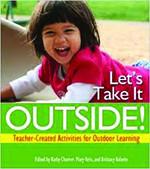 Let’s Take It Outside!: Teacher-Created Activities for Outdoor Learning
Let’s Take It Outside!: Teacher-Created Activities for Outdoor Learning
Charner, K et al. 2012. Lewisville, NC: Gryphon House
(371.384 C483)
Children love being outdoors and the outdoors can be a wonderfully diverse learning environment. The authors have created 100 classroom-tested outdoor activities for children from three to six years old.
Making Nonfiction from Scratch
Fletcher, R J. 2015. Portland, ME: Stenhouse Publishers
(808.02 F614)
Noticing that student nonfiction was painfully dry, teacher Ralph Fletcher overhauled how he teaches nonfiction writing to his students. He focuses on writing techniques and strategies using mentor texts and read-alouds to engage his students so they can write more effective and engaging nonfiction texts.
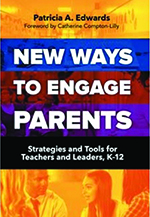 New Ways to Engage Parents: Strategies and Tools for Teachers and Leaders, K–12
New Ways to Engage Parents: Strategies and Tools for Teachers and Leaders, K–12
Edwards, P A. 2016. New York, NY: Teachers College Press
(371.192 E26)
One of the most stressful parts of teaching is coping with the expectations of parents and developing good relationships with them. With this book, Patricia Edwards provides teachers with several field-tested strategies for effective communication and starting parent-teacher relationships off on the right foot.
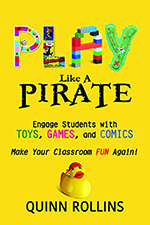 Play like A Pirate: Engage Students with Toys, Games, and Comics
Play like A Pirate: Engage Students with Toys, Games, and Comics
Rollins, Q. 2016. San Diego, CA: Dave Burgess Consulting, Inc
(371.3 R754)
Play is not frivolous behaviour; it is how humans naturally learn. Author Quinn Rollins makes the case for integrating everyday materials to captivate students and reignite your teaching.
Say Goodbye to Survival Mode: 9 Simple Strategies to Stress Less, Sleep More, and Restore Your Passion for Life
Paine, C. 2014. Nashville, TN: Thomas Nelson, Inc
(248.843 P144)
Survival mode is a limited way of living that’s not a great place to be for anyone. Author Crystal Paine moved her life from survival mode to living with intention, and offers ideas for others who want to escape the treadmill of exhaustion to live a life that matters.
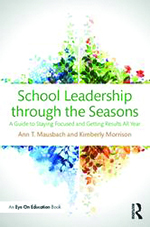 School Leadership through the Seasons: A Guide to Staying Focused and Getting Results All Year
School Leadership through the Seasons: A Guide to Staying Focused and Getting Results All Year
Mausbach, A T and K Morrison. 2016. New York, NY: Routledge
(371.2 M447)
Packed with real-life examples, this step-by-step guide provides principals with easy-to-implement ideas for school improvement that will build over the school year.
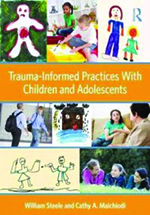 Trauma-Informed Practices with Children and Adolescents
Trauma-Informed Practices with Children and Adolescents
Steele, W and C A Malchiodi. 2012. New York, NY: Routledge
(616.852 S814)
Written for counsellors and therapists, this useful book will interest teachers who work with traumatized students as it provides insights into how children react to trauma and what kinds of supports they need to overcome it.
Understanding Schooling through the Eyes of Students
Murphy, J. 2016. Thousand Oaks, CA: Corwin, 2016
(371.1023 M978)
Seeing schools from the perspective of students will change our approaches to school improvements, says author Joseph Murphy. Realizing that asking students how they perceive school and their classrooms can raise issues that are difficult to solve and create tension with teachers, Murphy nonetheless argues that no strategy to improve a school or a classroom can be successful if student perspectives are not heard.
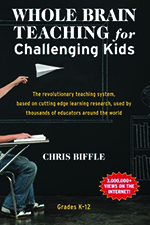 Whole Brain Teaching for Challenging Kids: (And the Rest of Your Class, Too!)
Whole Brain Teaching for Challenging Kids: (And the Rest of Your Class, Too!)
Biffle, C. 2013. Yucaipa, CA: Whole Brain Teaching LLC
(371.102 B591)
Students learn best when their whole brain is engaged. Author Chris Biffle shares how teachers can engage all the senses in their lessons to transform their passively receptive students into dynamic creators and learners. Teachers who’ve implemented these strategies report dramatic drops in problem behaviour and remarkable changes in their own engagement in teaching.
VIDEOS
Alpha Children: Reclaiming Our Rightful Place in Their Lives
Neufeld, G. 2013. Toronto, ON: Mediamax Interactive. 263 min.
(AV ALP)
This 4.5 hour course focuses on children with dominant personalities who are often described as bossy, controlling or even as bullies. Gordon Neufeld presents the roots of the alpha complex and suggests new strategies to change relationships with these children within their families and in classrooms.
From Nothing, Something: A Documentary about the Creative Process
Brickyard Filmworks et al. 2012. Manchester, MA: Brickyard Filmworks. 79 min.
(AV FRO 2012)
Through interviews with creative people in a number of disciplines, the filmmakers look at the unusual and costly way the creative process works.
Keeping the Wisdom and Sharing Our Gifts
Suderman, R. 2013. Alexandria, VA: Microtraining Associates. 35 min.
(AV BOY)
Host Elizabeth Boyd borrows from international humanitarian guidelines for empowering communities in disaster response to explore how teachers can empower students to develop their gifts.
Internet Research: What’s Credible?
Films for the Humanities & Sciences et al. 2015. New York, NY: Films Media Group. 29 min.
(AV INT 2015)
The Internet is an amazing tool for gathering information from diverse voices to learn about almost any topic. The Internet is also called the Wild West of information; it is lawless and without the rules of more civilized information sources. In this video, expert professors and librarians present strategies for judging reliable sources.
Intersexion
Lahood, Gary. 2012. New Zealand: Ponsonby Productions Ltd. 68 min.
(AV INT 2012)
One in 2,000 people are born with bodies that fall between male and female rather than directly into either of those categories. Interviewer Mani Bruce Mitchell travels the world to interview intersex people about life in the inbetween.
FRENCH BOOKS/LIVRES EN FRANÇAIS
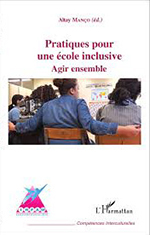 Pratiques pour une école inclusive : Agir ensemble
Pratiques pour une école inclusive : Agir ensemble
Manço, Altay. 2015. Paris, FRA : L’Harmattan
(371.102 M268)
L’éducation « inclusive » apparait aujourd’hui comme une nouvelle perspective synthétique, originale et systémique, permettant de respecter les diversités sans s’enfermer dans une conception communautariste, d’amener les différents acteurs à coopérer, à permettre aux différents points de vue et pratiques d’évoluer, dans le sens du respect et de l’épanouissement de chacun. Présenter ce type de pratiques, en tirer les enseignements nécessaires à l’extension de telles inspirations, constitue l’objectif de cette publication.
 L’inclusion sociale : Les enjeux de la culture et de l’éducation
L’inclusion sociale : Les enjeux de la culture et de l’éducation
Barrère, Anne. 2015. Paris, FRA : L’Harmattan
(371.102 B272)
Le terme d’inclusion sociale, étroitement associé à celui d’exclusion, est apparu à partir des années 1990. Face à la montée des inégalités, de nombreuses politiques ont été ainsi mises en œuvre pour tenter de lutter contre les mécanismes d’exclusion sociale, visant des pans entiers de notre société. Cet ouvrage analyse la notion d’inclusion sociale en explorant ses origines, son fonctionnement actuel et ses perspectives d’avenir, à travers plusieurs études menées en France et au Québec dans le monde de l’éducation et de la culture.
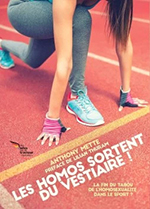 Les homos sortent du vestiaire ! La fin du tabou de l’homosexualité dans le sport?
Les homos sortent du vestiaire ! La fin du tabou de l’homosexualité dans le sport?
Mette, Anthony. 2015. Paris, FRA : Édition « Des ailes sur un tracteur »
(796 M595)
La lutte contre les discriminations est symbolique des nouveaux enjeux du sport. Des clubs, le Ministère, des fédérations s’entendent pour que le sport soit un lieu de respect et d’épanouissement pour toutes et tous. Pour autant, dans cet élan vertueux, les personnes homosexuel.le.s restent souvent déconsidéré.e.s. Pire, le sport est souvent décrit comme un des derniers bastions de l’homophobie. L’heure est à l’état des lieux, et à l’analyse des liens entre le sport et l’homophobie. Pour avancer.
Affectivité et réussite scolaire : Relation entre difficultés psychoaffectives et performances scolaires chez les élèves
Kubwimana, Joseph. 2015. Paris, FRA : L’Harmattan
(370 K95)
Les performances scolaires ont longtemps été expliquées par les facultés cognitives. Les recherches récentes montrent pourtant le rôle prépondérant de l’intelligence émotionnelle. Suivant cette dynamique, cet ouvrage se base sur les théories de l’intelligence émotionnelle pour prédire les performances scolaires à partir des quotients émotionnels des élèves. Le lecteur pourra trouver dans ce livre des éléments facilitant ou inhibant la réussite scolaire, ainsi que de nouvelles perspectives en psychologie de l’éducation.
L’école du futur : C’est déjà aujourd’hui
Dia, Abdoul Alpha. 2015. Paris, FRA : L’Harmattan
(371.3 D536)
Parce que l’école est une institution majeure de la société, soumise à l’influence de la société, parce qu’elle est le lieu de fabrique de l’avenir... la question se pose : quelle école pour demain ? Cet ouvrage tente de présenter différentes représentations de l’école du futur. L’école du futur est présentée et analysée du point de vue de la pédagogie, de la recherche, des infrastructures et de la gouvernance. L’objectif de ce travail, en contribuant à la réflexion sur l’école du futur, est de prendre part activement aux changements qui s’amorcent plutôt que de les subir.
La pédagogie de groupe dans les cours d’instruments de musique
Cobo Dorado, Karina. 2015. Paris, FRA : L’Harmattan
(782 D693)
Quelles sont les conditions pédagogiques et didactiques qui permettent de penser une pédagogie instrumentale de groupe? Comment le savoir musical se construit-il dans les situations individuelles et dans les situations en groupe restreint dans le cadre de l’enseignement instrumental? Quelle est la place de l’enseignant et des élèves dans cette construction de savoirs musicaux? Ce livre propose une étude de la « pédagogie de groupe » selon des perspectives historique, épistémologique et didactique des situations d’enseignement-apprentissage instrumental.
Le syndrome dys-exécutif chez l’enfant et l’adolescent : Répercussions scolaires et comportementales
Moret, Alain et Michèle Mazeau. 2013. Issy-les-Moulineaux, FRA : Elsevier Masson
(371.94 M844)
Parmi les troubles dys-, ou troubles cognitifs spécifiques développementaux, ceux qui affectent les fonctions exécutives sont encore trop méconnus. Ils touchent les fonctions « transversales » (attention, mémoire, inhibition). Cet ouvrage d’explication scientifique dans un premier tiers devient ensuite « guide pédagogique » à l’attention de tous les « accompagnateurs », des médecins aux parents en passant par les psychologues, professionnels de la rééducation, enseignants et assistants de vie scolaire qui cherchent à comprendre les ressorts de ces troubles et à apporter une aide efficace aux jeunes qui en souffrent.
